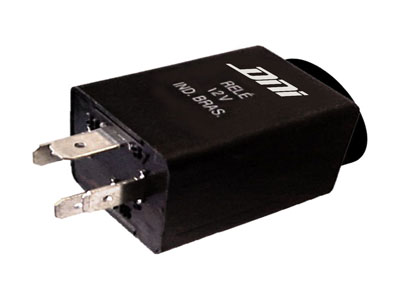Key Takeaway
Yes, a relay can be repaired, but it depends on the type and extent of the damage. For minor issues like dirty contacts, you can clean them carefully. If the contacts are worn out or pitted, they might need to be replaced. For coil-related problems, checking and replacing the coil might be necessary. However, some relays are sealed and not designed for repair. In such cases, it’s usually more practical to replace the relay. Always ensure the relay is de-energized before attempting any repairs to avoid electrical hazards.
Assessing Damage: When to Repair or Replace
The first step in dealing with a faulty relay is assessing the damage to determine whether repair or replacement is more appropriate. Minor issues, such as dirty contacts or loose connections, can often be repaired easily. However, severe damage like a burnt coil, extensive contact wear, or mechanical failure typically warrants replacement. Assessing the extent of the damage helps in making an informed decision, ensuring that the effort and cost involved in repair are justified.

Common Repair Techniques for Relays
Relays, being mechanical devices, can experience wear and tear over time. However, with some basic repair techniques, many relays can be restored to reliable operation. One common technique is cleaning the contacts. Contacts can become oxidized or dirty, leading to increased resistance and poor performance. Using a contact cleaner or a soft brush to remove oxidation and debris can significantly improve conductivity.
Another important repair technique is tightening connections. Loose connections can cause intermittent issues or complete failure. Ensure all connections are tight and secure to maintain a stable electrical path. This simple step can often resolve many operational problems.
In some cases, replacing minor components like springs can restore the mechanical functionality of the relay. Springs can weaken or wear out, affecting the relay’s ability to switch correctly. Replacing a worn spring is a straightforward process that can extend the life of the relay.
These repair techniques are essential, especially for relays in critical systems where reliability is paramount. Regular maintenance, including cleaning and tightening connections, can prevent issues before they arise, ensuring the relay continues to function effectively. By addressing these common problems, engineers can enhance the performance and longevity of relays in various applications.
Tools and Materials Needed for Relay Repair
Repairing a relay effectively requires a specific set of tools and materials. A multimeter is crucial for testing electrical continuity and resistance, allowing you to diagnose issues with the relay’s coil and contacts. A screwdriver set is necessary for disassembling the relay housing and accessing internal components. Pliers are useful for manipulating small parts and ensuring secure connections.
Contact cleaner is essential for removing oxidation and debris from the relay contacts, improving their conductivity and performance. In some cases, a soldering iron and solder might be required to replace or reattach components securely. Soldering helps to ensure strong electrical connections and restore functionality to the relay.
Having the right tools and materials on hand not only makes the repair process smoother but also ensures that repairs are done safely and effectively. Using the proper tools can prevent damage to the relay and other components, reducing the risk of further issues. Regular maintenance and timely repairs with these tools and materials can extend the lifespan of relays, ensuring they continue to operate reliably in various applications.
Step-by-Step Guide to Repairing a Relay
Disconnect Power: Ensure the relay is disconnected from any power source to prevent electrical shock.
Disassemble the Relay: Carefully open the relay casing using a screwdriver, taking note of the arrangement of components.
Inspect for Damage: Check the coil, contacts, and mechanical parts for signs of wear, dirt, or damage.
Clean Contacts: Use contact cleaner to remove any oxidation or debris from the contacts.
Tighten Connections: Ensure all electrical connections are tight and secure.
Replace Worn Components: If necessary, replace springs or other minor components that are worn or damaged.
Reassemble the Relay: Put the relay back together, ensuring all parts are correctly aligned.
Test the Relay: Use a multimeter to test for continuity and proper operation before reconnecting to the power source.
Cost-Effectiveness of Relay Repair vs. Replacement
When evaluating the cost-effectiveness of repairing versus replacing a relay, several key factors should be considered. Repairing a relay often incurs lower immediate costs, particularly for minor issues such as cleaning contacts or tightening connections. These repairs can be performed quickly and at a low expense. However, if the relay is significantly damaged or has a history of frequent failures, replacement might be more economical in the long term.
The availability of replacement parts and the labor costs for repairs are crucial considerations. Sometimes, finding the exact parts needed for repair can be challenging or costly, making replacement a more practical option. Additionally, the time and expertise required to perform repairs can add to the overall expense, especially if professional service is needed.
In critical systems where reliability is paramount, the dependability of a new relay can outweigh the potential cost savings of repair. New relays come with warranties and assurances of performance, reducing the risk of future failures. Ultimately, the decision between repairing and replacing should balance the immediate cost savings with long-term reliability and performance requirements, ensuring optimal operation and minimal downtime for the system.
Conclusion
Repairing relays can be practical and cost-effective, particularly for minor issues. Regular maintenance and timely repairs can extend the life of relays, ensuring reliable operation and preventing unexpected failures. However, for severe damage or critical applications, replacement might be the better option. By carefully assessing the damage, using proper repair techniques, and considering the cost-effectiveness, you can make informed decisions about whether to repair or replace a relay, ensuring the optimal performance of your electrical systems.
